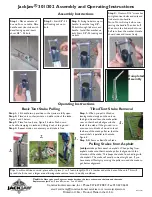
7 - MAINTENANCE
Radiator top tank
The radiator top tank allows for hot coolant expansion and
keeps the expanded coolant volume within the cooling
system.
The level of coolant in the system is being monitored by
the level sensor in the top tank.
Coolant is added to the system through the filler neck on
the radiator top tank.
If the coolant level is low, allow the engine and radiator to
cool before attempting to open the radiator top tank cap
(1)
. Add the proper coolant as needed to bring the coolant
level up to the fill neck of the radiator top tank. Do not mix
different coolant types. Replace cap when finished adding
coolant to the system.
The capacity of the cooling system is
64 L
(
17 US gal
).
This capacity does not include the heater core or cab
plumbing.
RAIL16GEN0216AA
3
Adding coolant to the system
The following steps are to be followed when draining and refilling the cooling system
1.
Shut off the vehicle engine and allow the system to cool.
2.
Open the radiator top tank cap slowly to relieve system pressure.
3.
Remove the radiator top tank cap and fill the radiator top tank with coolant.
4.
Allow the coolant to fill the system completely and then wait 2 to 3 minutes.
5.
Refill the radiator top tank again.
6.
Leave the radiator top tank cap off and run the engine at idle for several minutes.
7.
Top off the coolant level in the radiator top tank.
8.
Run the engine at high idle until the thermostats open.
9.
Shut off the engine and top off the coolant level in the radiator top tank.
10. Restart and run the engine up to operating temperature.
11. Shut off the engine and allow the engine to cool.
12. Top off the coolant level in the radiator top tank and reinstall the radiator top tank cap.
7-15
Summary of Contents for LX1214
Page 8: ......
Page 11: ...1 GENERAL INFORMATION Your machine RAIL16SP00177FA 1 Ag Bag silage bagger 1 3 ...
Page 28: ...2 SAFETY INFORMATION California proposition 65 warning BT09A213 1 2 10 ...
Page 32: ...2 SAFETY INFORMATION RAIL16SP00182FA 3 RAIL16SP00183FA 4 2 14 ...
Page 94: ...4 OPERATING INSTRUCTIONS 4 10 ...
Page 158: ...6 WORKING OPERATIONS 6 52 ...
Page 260: ...7 MAINTENANCE 7 102 ...
Page 270: ...8 TROUBLESHOOTING 8 10 ...
Page 272: ...9 SPECIFICATIONS 9 2 ...
















































